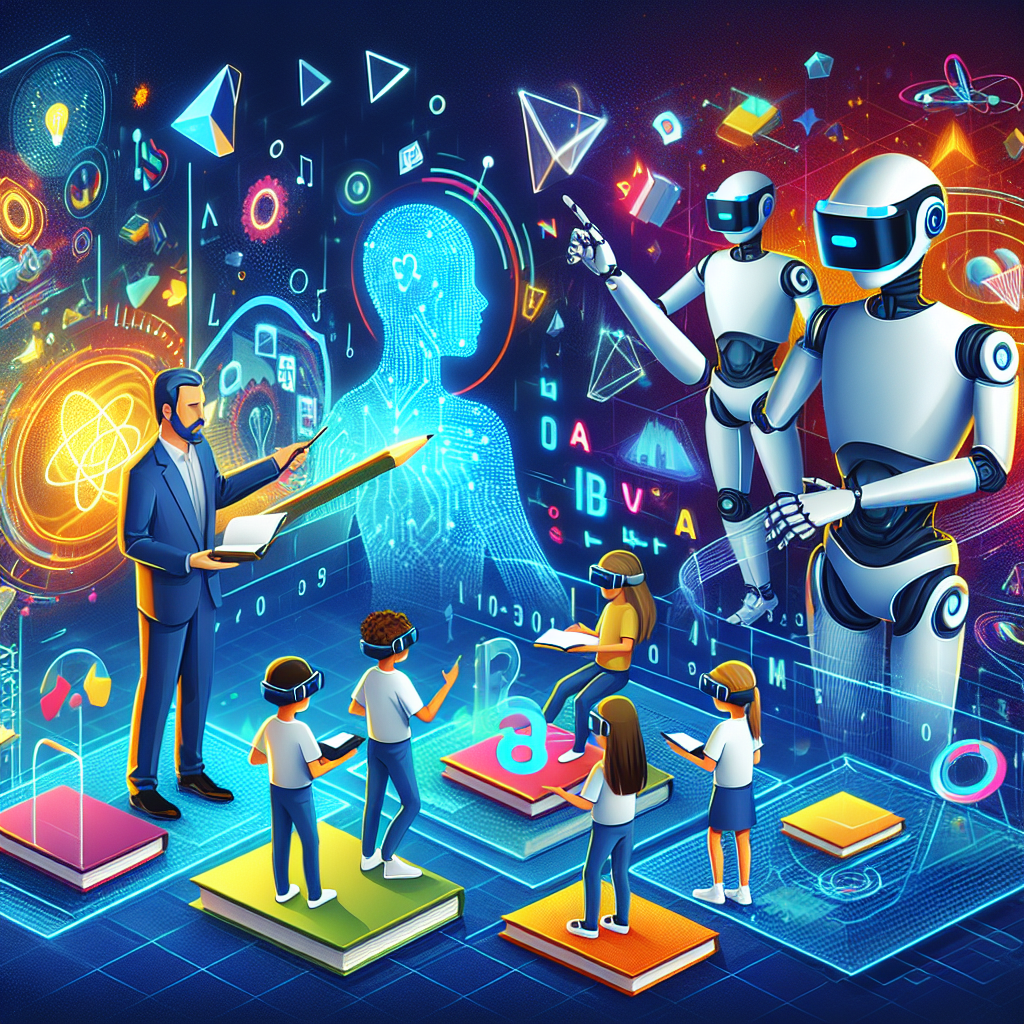Introduction
AI-powered virtual reality (VR) technology is revolutionizing the way we learn and interact with information. By combining the power of artificial intelligence (AI) and immersive virtual reality environments, educational experiences are becoming more engaging, interactive, and personalized than ever before. In this article, we will explore how AI-powered VR is transforming learning experiences and discuss the benefits and potential challenges of this innovative technology.
The Power of AI in Virtual Reality
Artificial intelligence plays a crucial role in enhancing the capabilities of virtual reality technology. AI algorithms can analyze user behavior, track progress, and provide personalized recommendations based on individual learning styles and preferences. This level of customization allows learners to engage with content in a way that is tailored to their specific needs, leading to more effective and efficient learning outcomes.
AI-powered VR also has the ability to create dynamic and interactive learning environments that adapt in real-time to user responses. For example, virtual reality simulations can adjust the difficulty level of tasks based on a user’s performance, providing a challenging yet achievable learning experience. By incorporating AI, virtual reality can provide personalized feedback, guidance, and support, making the learning process more engaging and effective.
Benefits of AI-Powered Virtual Reality in Education
There are numerous benefits of using AI-powered virtual reality in education. Some of the key advantages include:
1. Immersive Learning Experiences: Virtual reality technology allows learners to immerse themselves in realistic and interactive environments, making the learning process more engaging and memorable.
2. Personalized Learning: AI algorithms can analyze user data to personalize learning experiences based on individual strengths, weaknesses, and preferences. This level of customization can help learners achieve better outcomes in less time.
3. Real-Time Feedback: Virtual reality simulations can provide instant feedback on user performance, allowing learners to track their progress and make adjustments as needed.
4. Enhanced Collaboration: AI-powered VR technology enables learners to collaborate with peers in virtual environments, fostering teamwork and communication skills.
5. Accessibility: Virtual reality technology can provide access to educational resources and experiences that may not be available in traditional classroom settings, making learning more inclusive and accessible to all.
Challenges of AI-Powered Virtual Reality in Education
While AI-powered virtual reality offers many benefits, there are also challenges and considerations that need to be addressed. Some of the key challenges include:
1. Cost: Implementing AI-powered virtual reality technology can be expensive, requiring investment in hardware, software, and training. Schools and institutions may need to allocate resources to support the integration of this technology into educational settings.
2. Technical Limitations: Virtual reality technology is still evolving, and there may be technical limitations that impact the effectiveness of AI-powered VR in education. Issues such as latency, resolution, and motion sickness can affect the user experience and learning outcomes.
3. Privacy and Data Security: AI algorithms rely on user data to provide personalized learning experiences, raising concerns about privacy and data security. Schools and institutions must ensure that user data is protected and used responsibly.
4. Training and Support: Teachers and educators may require training and support to effectively integrate AI-powered virtual reality into their teaching practices. Professional development opportunities and resources may be needed to help educators leverage the full potential of this technology.
5. Equity and Inclusion: Access to AI-powered virtual reality technology may be limited for some students, leading to disparities in educational opportunities. Schools and institutions must consider how to address equity and inclusion issues to ensure that all learners have access to these innovative learning experiences.
FAQs
Q: How can AI-powered virtual reality enhance learning outcomes?
A: AI-powered virtual reality can enhance learning outcomes by providing personalized learning experiences tailored to individual needs, offering real-time feedback and support, and creating immersive and engaging learning environments that promote active participation and retention of information.
Q: What are some examples of AI-powered virtual reality applications in education?
A: Some examples of AI-powered virtual reality applications in education include virtual reality simulations for medical training, language learning programs that adapt to individual proficiency levels, and interactive historical reenactments that immerse students in different time periods.
Q: How can schools and institutions integrate AI-powered virtual reality into their educational programs?
A: Schools and institutions can integrate AI-powered virtual reality into their educational programs by investing in the necessary hardware and software, providing training and support for teachers and educators, and developing curriculum and learning experiences that leverage the capabilities of this technology.
Q: What are the potential ethical considerations of using AI-powered virtual reality in education?
A: Ethical considerations of using AI-powered virtual reality in education include issues related to privacy and data security, equity and inclusion, and the impact of technology on social interactions and relationships. Schools and institutions must address these concerns to ensure that the benefits of AI-powered VR are realized in a responsible and ethical manner.
Conclusion
AI-powered virtual reality has the potential to transform learning experiences by providing personalized, immersive, and interactive educational opportunities. By leveraging the power of artificial intelligence and virtual reality technology, educators can create dynamic and engaging learning environments that cater to individual needs and preferences. While there are challenges and considerations that need to be addressed, the benefits of AI-powered virtual reality in education are clear. As this technology continues to evolve, it will be exciting to see how it shapes the future of learning and empowers students to reach their full potential.

